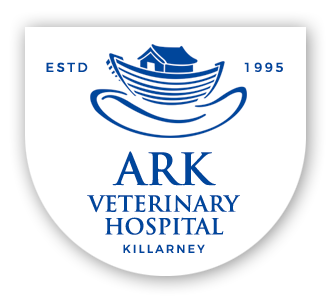
Endoscopy
An endoscope is a flexible tube with a viewing port that is inserted either into the stomach or trachea via the mouth. The endoscope permits the inspection of the inside of these hollow organs. We are at Ark Veterinary Hospital use endoscopy in the investigation of chronic coughs or suspected obstructions.
What diseases are diagnosed with an endoscopic examination?
The endoscope allows full color viewing of the esophagus, stomach and the upper part of the small intestine or the colon.
The examiner can identify abnormalities such as inflammation, abnormal swelling, or areas of scarring or stricture.
The examiner can identify abnormalities such as inflammation, abnormal swelling, or areas of scarring or stricture (abnormal narrowing). If a foreign body such as a bone, stick, rock, toy, coin, or hairball is seen, it can usually be seen and retrieved.
Can viewing an abnormal area give the diagnosis?
While seeing an abnormal lesion or suspicious area gives us valuable information, it is usually necessary to biopsy the area in order to reach a diagnosis. The endoscope has a tiny channel through which a biopsy instrument can be passed. Precise biopsy samples can be taken of any abnormal areas. These samples consist of tiny “bites” or pieces of tissue cut from the lining of the organ by the biopsy instrument. These tissue samples, called “pinch biopsies” are then submitted to a veterinary pathologist for microscopic evaluation.
What do you do if you don’t see any abnormal areas?
Many diseases cause changes that can only be detected by histopathology, or a microscopic inspection of the tissues. Therefore, even if the organ or tissues appear normal, biopsies are taken. In many cases, biopsy of the stomach of a vomiting dog or of the colon of a dog with diarrhea will be very helpful in determining if disease is present.
Can cancer be diagnosed with endoscopy?
In many cases your veterinarian can diagnose cancer of the gastrointestinal tract using the endoscope. However, some tumors do not affect the mucosa or inner lining of the stomach or colon. Since the biopsy procedure only samples the mucosa it is possible to miss detecting a tumor that involves only the deeper layers of the intestinal tract. In these unusual cases, the biopsy results are normal yet the dog continues to experience clinical signs. In order to reach a diagnosis in these cases, full-thickness biopsies obtained through an exploratory surgery, (exploratory laparotomy) or non-invasive tests such as an MRI (Magnetic Resonance Imaging) may be required.
What steps need to be taken to prepare for endoscopy?
It is vital that the stomach and intestinal tract be empty of all food and fecal matter prior to an endoscopic evaluation. A complete twelve-hour fast is usually sufficient if the stomach is being examined. If the colon is to be examined, oral medication is begun twelve to eighteen hours before the procedure to remove fecal material from the entire intestinal tract. Fasting for twelve to eighteen hours is also necessary so that new fecal material does not form. On the morning of the procedure, one or more enemas are given to remove any remaining stool from the lower intestinal tract.
Is general anesthesia required?
It is impossible to safely pass an endoscope into a conscious dog’s stomach or colon.
Yes. It is impossible to safely pass an endoscope into a conscious dog’s stomach or colon. Most dogs will require only a short-acting anesthesia and the patient is allowed to go home shortly after completion of the procedure.
When will I know the results?
Since the organs are viewed in real time, the result of what is seen is known immediately. However, the final diagnosis usually depends on the results of the pathologist’s study of the biopsies. This may take up to a week, depending on the individual circumstances.

your pet since 1995
